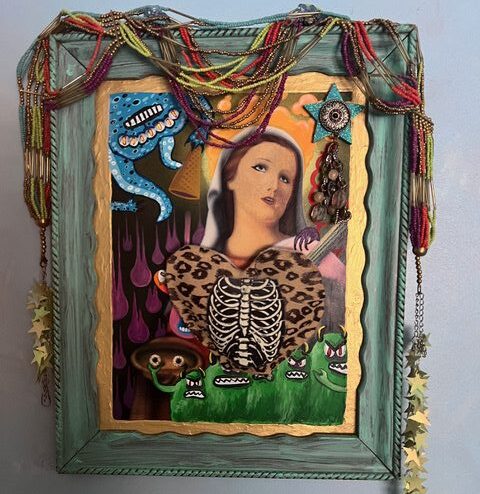
Freud got one important thing wrong about grief. I discovered this when my experiences as a mourner did not always jive with what I had been taught as a social worker and practiced as a therapist. During the time of my university education and study of the great books, theories of grief were based on Freud, who, in his classic volume Mourning and Melancholy, recommended detachment from deceased loved one to move on with one’s own life. Current research supports the opposite, recommending that mourners find ways to continue a relationship with deceased loved ones, now referred to as, “establishing and maintaining continuing bonds.”
Memories are what’s left after the loss of a loved one, and our creativity and various art forms serve to create a place or an object on which to focus those memories. But what if you aren’t an artist and you don’t think of yourself as creative? My colleague and friend, Cynthia Winton-Henry, in addition to being co-founder of InterPlay, an art-based system to unlock the wisdom of the body, a dancer, and author of The Art of Ensoulment: A playbook on How to Create from Body and Soul– Cynthia has a great visual art way to accomplish this continuing connection. She’s a shrine-maker. Cynthia suggests you may be one too.
“If you’ve ever put flowers on a grave, placed a photo of a deceased family member in a prominent place in your home, made an altar with found objects, or displayed your loved one’s memorabilia in a box, you are a shrine-maker already.” I learned the power these found object art pieces can provide when one’s loss is not a death but an injury, or disability. Cynthia gifted me one several year ago, after I’d broken my shoulder.
“You’re not as you were,” the doctor tells me as he shows me the x-ray of my shoulder. The picture means little to me since I’m not totally clear on what the shoulder bones are supposed to look like. During my dance class, I had been moving sideways on a sticky floor and couldn’t get my feet under me in time and landing directly on my left shoulder, I broke it in a couple of places. After the doctor directs me to push against his hands and reach up overhead, he declares, “You are at eighty percent.” I tell him, I’m really not an eighty percent kind of gal, so he gives me a script for more physical therapy. The PT sessions direct the incredible work I must do to get back to my “old self” and my mission in life, which seems to be to become the world’s oldest known person still dancing.
Cynthia had had a shoulder injury a couple of months before mine, (her right shoulder, my left), and she was nearly back to a complete range of motion by this time, which encouraged me to believe such a thing was possible. Her recovery program included all of what I was doing along with her spiritual practice of making art out of what happens in her life. We commiserated about our “broken wings” and when I saw her at a national conference, she gifted me a framed art piece made of found objects, titled, “Our Lady of the Broken Wings.” It still hangs beside my bed, sending memories of the challenges Cynthia and I have both overcome, and reminding me of the loving encouragement the piece provided to the one who created it, the one who received it, and all the love it contained.
Learn more about Cynthia’s shrine making, how to do it, and how such arts help us grieve this Thursday April 4, 2024, at 7:30 pm eastern, 4:30 pm pacific in the 3rd of 5 online events, The Art of Grieving Series–Visual Arts on the Reimagine Platform. The Series is based on my soon to be available book, The Art of Grieving: How Art and Artmaking Help Us Grieve and Live Our Best Lives.
Register here and pay what brings you joy. https://letsreimagine.org/76768/the-art-of-grieving-series-visual-arts

